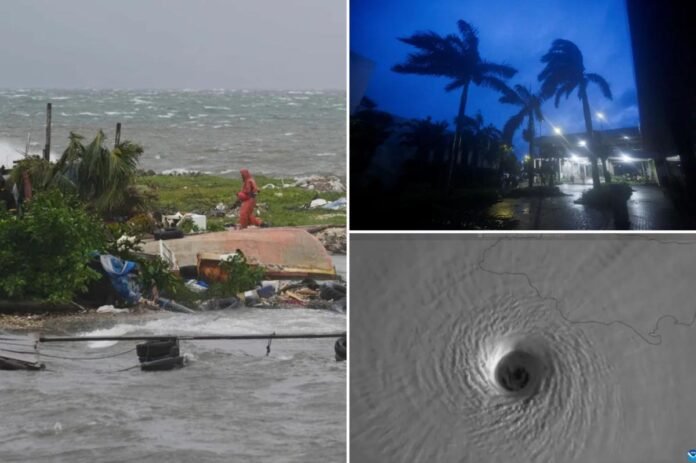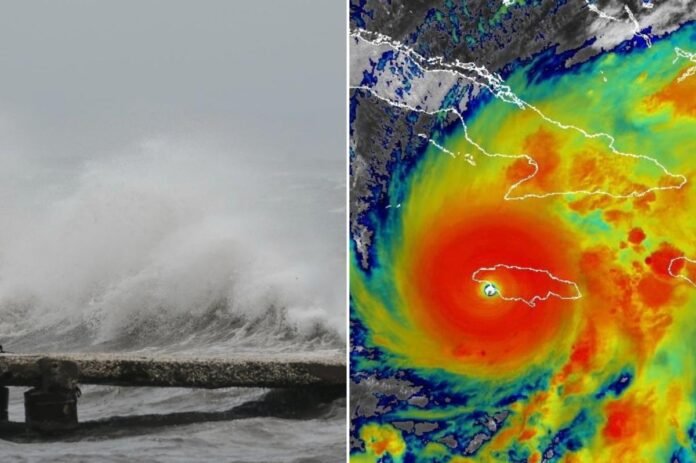Hurricane Melissa tore into Jamaica’s coast just after 1 p.m. ET on Tuesday as a rare Category 5 storm, delivering the fastest wind gusts ever recorded at a landfall in the Atlantic – 185 mph. The blast hit the island’s southwestern shore with the force of a true super‑typhoon, ripping roofs and scattering debris across cities and villages.
UN officials and the World Meteorological Organization branded the event “the storm of the century.” Anne‑Claire Fontan, a cyclone specialist for the UN, warned that Jamaica faced a “catastrophic” scenario, noting that only the 1935 Labor Day Hurricane matched Melissa’s wind speed at landfall.
Widespread chaos in Jamaica
Jamaica’s 2.8 million residents were thrust into emergency mode. The country closed all airports and forced many of the 25 000 tourists stranded on the island to shelter in place or evacuate. Power grids went dark the day before Melissa arrived, and the internet was cut off in large parts of the nation – a critical blow to coordination efforts.
The wind hammered streets into churning rivers, punched holes in buildings, and triggered flash floods. A storm surge estimated at 13 feet and a record‑level rainfall of 40 inches threatened to cover coastal communities. The devastation was visible in satellite images: the eye of the hurricane tracked eastward off Jamaica’s northwest coast, losing strength to a Category 4 with 145 mph winds by 6 p.m. ET before leaving the island.
Only three deaths have been confirmed so far on Jamaica, but the final toll is likely to rise as rescue crews comb through wreckage. CNN and other news outlets say emergency services are working to clear roads and provide shelter for those affected.
What’s next? The path through the Caribbean
After striking Jamaica, Melissa is set to hit Cuba early Wednesday with the fury of a Category 4 hurricane, bringing at least 130 mph winds, up to 20 inches of rain and a 12‑foot surge. Cuban authorities have ordered mandatory evacuations in vulnerable areas. The storm will cross the island overnight and arrive at the Bahamas in the morning with reduced but still dangerous winds of around 100 mph. The Bahamian government has tightened warnings, forecast up to 10 inches of rain and an 8‑foot surge.
Turks and Caicos are expected to see only tropical‑storm‑level conditions, a reprieve after earlier predictions forecasted a direct hit. By Thursday the storm will be moving into the open Atlantic, with Bermuda reporting hurricane‑watch winds topping 85 mph and a brief 3‑inch rain burst. The destruction will wind up as “historic” according to meteorologists, who point out that Melissa ties the 1935 Labor Day Hurricane for the most intense Atlantic landfall on record.
Historical context
Melissa’s 185‑mph landfall matches only one other Atlantic storm in history—the 1935 Labor Day Hurricane that devastated the Florida Keys. Both hurricanes burst open to a pressure of 892 millibars, a key indicator of power. Melissa now shares the top five for strongest recorded hurricane winds, alongside Dorian, Wilma, Gilbert, and Labor Day. The only hurricane superior in wind speed is the 1980 Hurricane Allen, which startled the Caribbean with 190 mph winds.
Jamaica’s challenge ahead
Unlike the comparatively milder 1988 Category 3 Gilbert – which already flattened about a fifth of Jamaica’s buildings – Melissa’s onslaught is far more devastating. With buildings stripped, highways cut, stores destroyed, and essential services down, recovery will take months. The island’s elders and government officials are already preparing for a massive relief effort and rebuilding phase, anticipating that the storm may shape Jamaica’s future for years to come.
In the coming days, keep an eye on updates from local authorities, UN agencies, and weather services. While the primary threat to human life has been mitigated by the immediate evacuation orders, the scale of damage and the long‑term recovery costs remain a major concern for Jamaica and the wider Caribbean region.
Source: New York Post
Stay informed on all the latest news, real-time breaking news updates, and follow all the important headlines in world News on Latest NewsX. Follow us on social media Facebook, Twitter(X), Gettr and subscribe our Youtube Channel.



